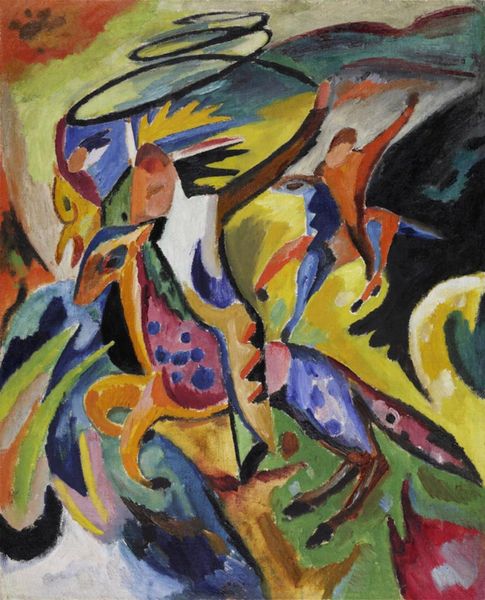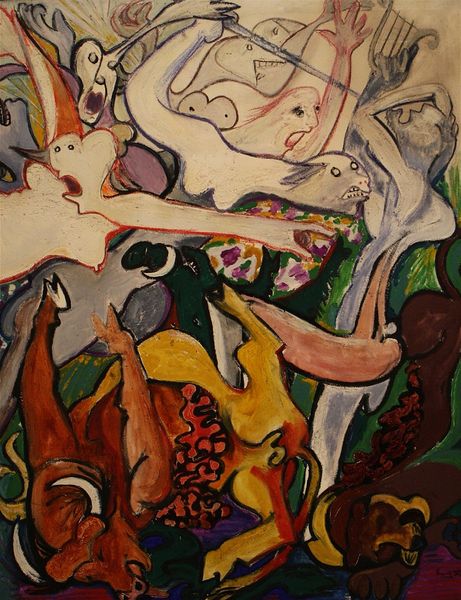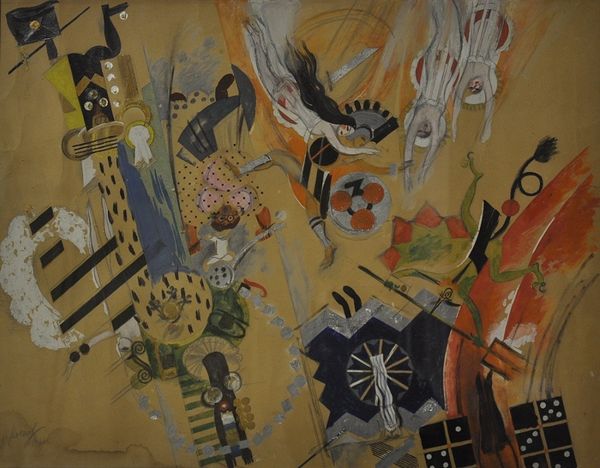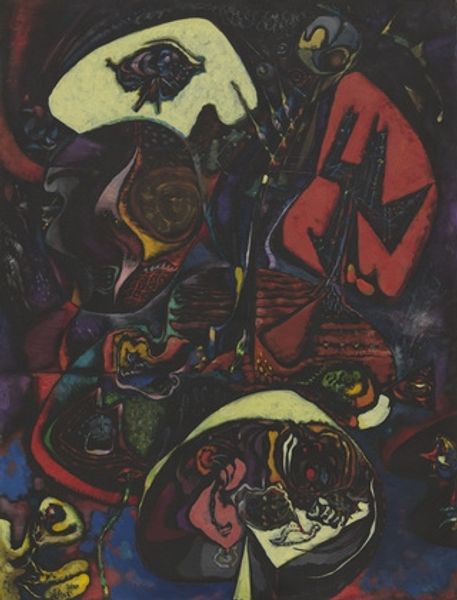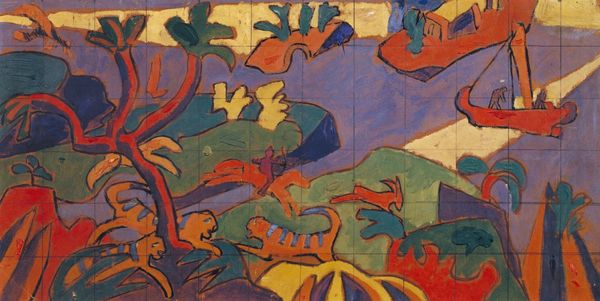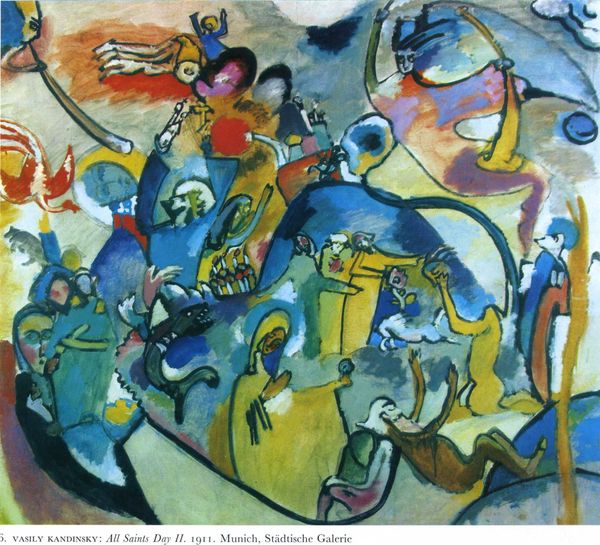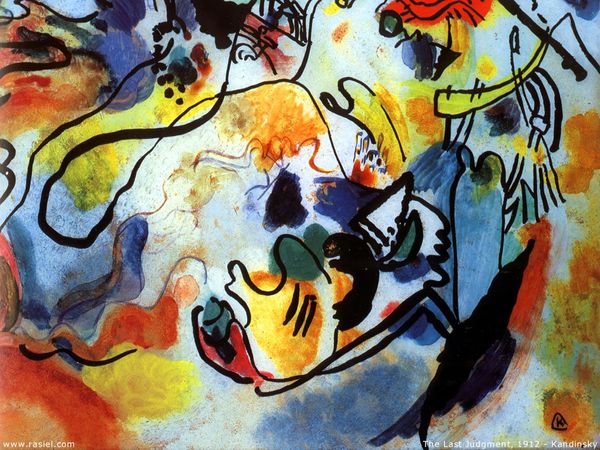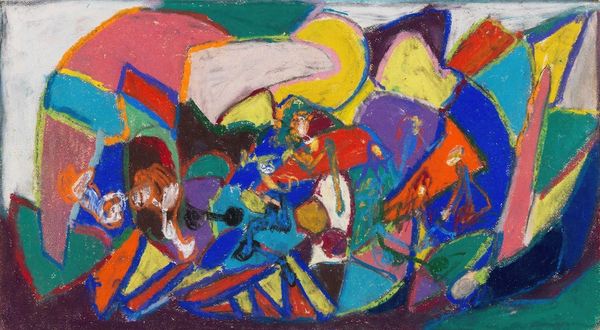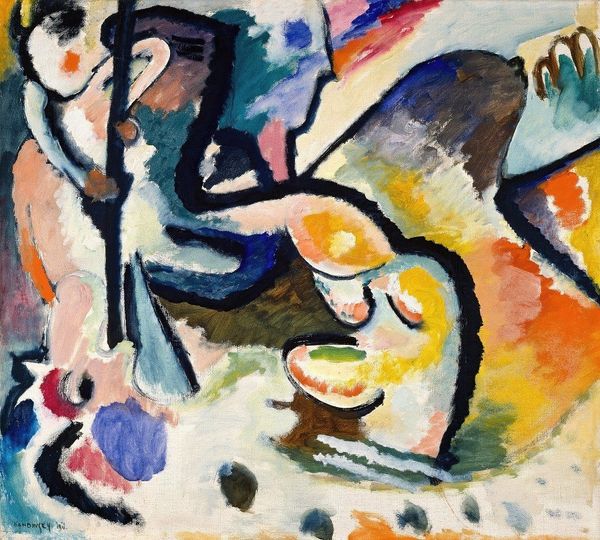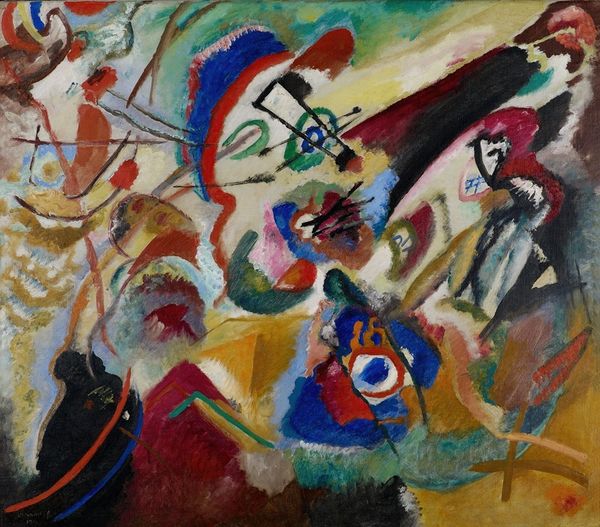
Copyright: Public Domain: Artvee
Curator: Wassily Kandinsky’s "Saint George I," created in 1911 using oil paint, offers a dynamic interpretation of the classic subject matter. At this stage, Kandinsky was moving away from traditional representation. Editor: Oh, my initial impression is a vibrant swirl! The colors leap off the canvas, it’s almost musical, chaotic, but with a strange sort of harmony like a dragon chasing sunshine. It vibrates, somehow, on the wall, doesn’t it? Curator: Absolutely, and note how he’s experimenting with the dissolution of form. The recognizable elements—the saint, the horse, perhaps even the dragon—are abstracted into fields of color and gestural lines. The materiality of the paint itself is key. Consider the thick application, visible brushstrokes... Editor: Which contribute to the raw emotionality! Look how the impasto creates texture, like the gold paint applied almost clumsily around the figure—is that intentional, do you think, undermining the heroism? It looks… almost deliberately anti-heroic. Curator: Precisely! He's challenging the traditional narrative of heroism. Furthermore, given Kandinsky’s spiritual interests and influences like Theosophy, "Saint George I" becomes less about literal representation and more about conveying inner, spiritual truths through abstract forms. Editor: That makes sense. So, it’s less a literal dragon slaying and more a visual metaphor for overcoming internal struggles? A journey into one’s own soul, represented through furious color? The horse… it doesn't look triumphant, more… burdened? Curator: The symbolism shifts away from solely religious or historical context, resonating instead on a more personal and universal plane. The labor is visible; there’s no hiding the artist’s hand, rejecting mass production ideals. The brushwork conveys just as much, or more, as the overt iconography. Editor: Yes, that makes it immediate. Raw. Almost violent, yet hopeful, I get a sense of struggle toward hope out of the visible effort. Well, it leaves me with more questions than answers, really, which I suppose is the point. Curator: Indeed, and by looking at the material qualities and Kandinsky’s revolutionary method, it allows for each person to derive their own answers, as well as contemplate the relationship between material culture and spiritual understanding.
Comments
No comments
Be the first to comment and join the conversation on the ultimate creative platform.

